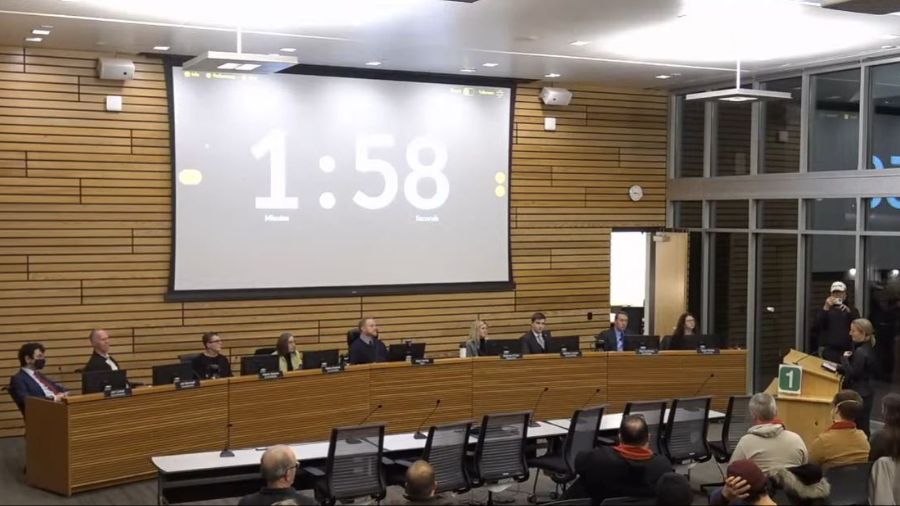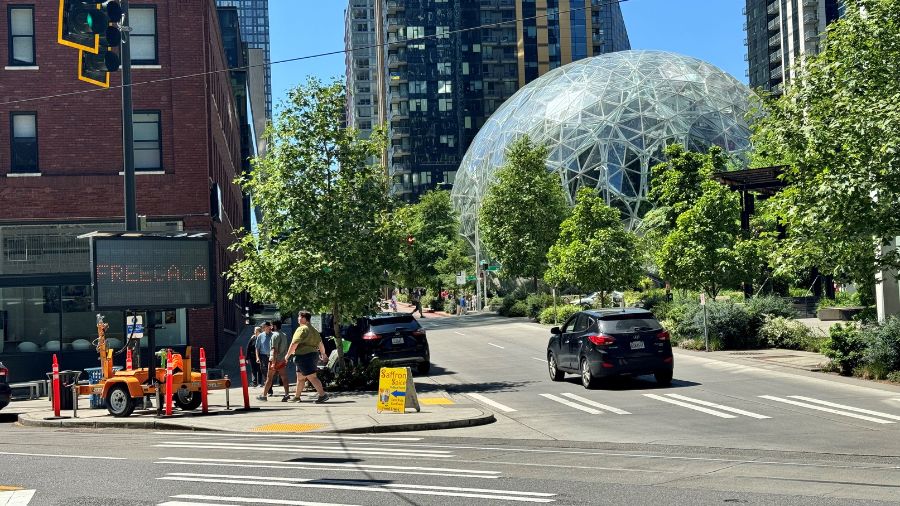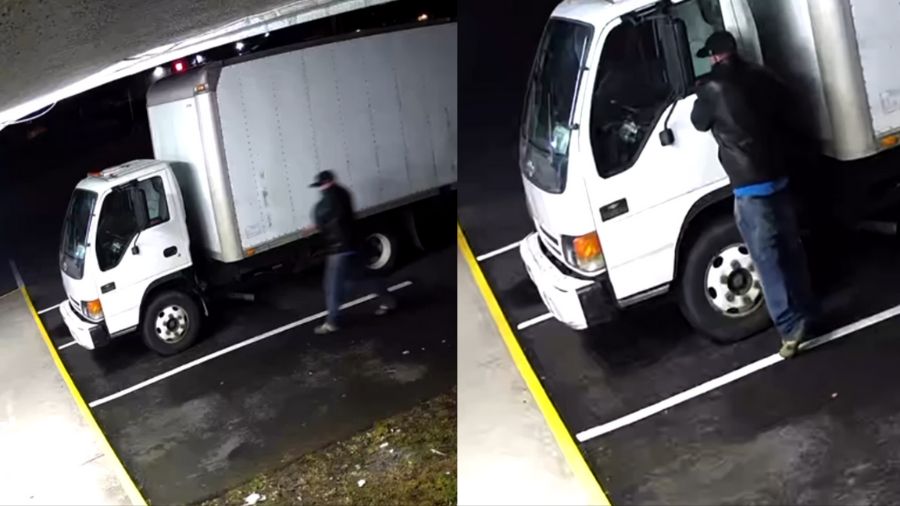Rantz: You’re being lied to about permanent supportive housing in Redmond
Mar 25, 2024, 5:55 PM

Kenmore City Council discussing permanent supportive housing in Redmond last week. (Photo screengrab of city council meeting via the city council's website)
(Photo screengrab of city council meeting via the city council's website)
As Redmond residents rightly push back against a permanent supportive housing project, Seattle media has taken sides. As usual, they’re on the wrong side again.
Redmond city leaders snuck into a Plymouth Housing housing project without so much as pretending to care what the residents had to say. The 100-unit building (85 studios and 15 one-bedrooms) will house the chronically homeless. There was no public hearing to alert the public. City leaders did not ask the public because their position on it did not matter. The decision came after Kenmore city leaders rejected the same project. Unlike in Redmond, the Kenmore City Council actually listened to residents’ concerns.
Angry that they weren’t consulted, neighbors are expressing reasonable concerns to the council. But they’re being ignored. And yet some local media members are portraying them as the problems: Recalcitrant NIMBYs (“not in my backyard”) who lack compassion and are standing in the way of homelessness solutions that work. With the level of confidence these media members exude, you might be fooled into thinking they know what they’re talking about. But they’re either lying to you about permanent supportive housing, or they don’t actually know what it is.
More from Jason Rantz: I witnessed a homeless man overdose and it highlights Seattle’s failures
What is permanent supportive housing?
Permanent supportive housing is often confused with affordable housing projects. It is actually a fully subsidized housing program offered to the chronically homeless. The free apartments are coupled with wraparound services to address the root causes of an individual’s homelessness and their inability to keep a job.
On paper, permanent supportive housing projects sound like an innovative and worthwhile solution. If only they actually worked. This is part of the failed “housing first” model favored by progressive activists and politicians. I cover this extensively in my book, “What’s Killing America.”
When the city, county or state brings people inside, they claim the person is no longer homeless and celebrate homelessness’ defeat. But the programs are never-ending money pits. Under the housing-first model, homeless residents need not enroll in services as a condition of the housing. If they become chronically homeless because of drug addiction, for example, they do not need to quit using their drug of choice. In fact, they often just continue to use it in their tax-payer-funded homes with tax-payer-funded drug paraphernalia. It explains why at least 179 people died of overdoses in homeless housing projects in 2022.
While there’s no mandatory treatment, the chronically homeless continue to live aimless lives where they are never self-sufficient. They live in subsidized housing, eating subsidized food and being offered subsidized services they never use. Meanwhile, housing providers continue to get paid to maintain the residences. They are part of the homeless industrial complex.
More from Jason Rantz: Redmond Mayor’s giggling daughter exposed tearing down Israeli hostage flyers
Seattle media loves permanent supportive housing
Seattle media members tout permanent supportive housing as the silver bullet to end homelessness because the progressive politicians they vote for claim it so.
KING 5’s left-wing partisan, Cornelius Hocker, framed the uproar in Redmond with a heavy hand that focused more on why he thought they were misguided than why they were upset to begin with. He incredulously reported that these neighbors have concerns, “despite an extensive list of requirements supportive housing must follow in the city.” Hocker said the city prohibits the location from becoming a heroin-injection site, so take that NIMBYS! But that’s not actually what the neighbors are claiming. He mentions rules against drug use and selling as if that matters.
While permanent supportive housing programs, under the housing first model, claim to bar drugs, they do not search rooms for illicit substances. The on-site staff knows their residents are drug addicts. They just won’t judge them for it. Plymouth effectively helps users get high under the “harm reduction” model, which provides clean drug paraphernalia to mitigate the risks of spreading disease. They admit the practice on their website: “If we learn that they are using substances (or engaging in other behaviors that come with risks), we help them minimize the harms associated with that behavior.”
As much as media advocates for Plymouth, and other permanent supportive housing providers, brag about the on-site services, people living around these units should be under no illusion. There will be drug use in and around the housing, and it will entice drug dealers into the neighborhood. And even if they had decent services for addicts, Plymouth doesn’t hide their intention when dealing with addicts: “Our residents get to make changes if, and when, they are ready. The role of our staff is to support our residents in setting and achieving their own goals at their own pace.” If the addict doesn’t want to get clean because, say, they have a free apartment for life and clean needless and fentanyl pipes provided to them, they don’t have to.
More from Jason Rantz: Is it legal for the Redmond Mayor to make her social media pages private?
It seems like media members don’t know what this housing strategy really is
Seattle Times’ Danny Westneat directly targeted concerned Redmond residents in his column last week. He blamed their attitude for the failures of a regional approach to homelessness because he doesn’t actually understand the issue at all. It’s likely why he (and other advocates) can never point to any cities or counties that have adopted this very model in an effective way to tackle homelessness.
“For 2.5 hours, dozens of residents told the Redmond City Council that bringing an apartment building to house formerly homeless people to downtown Redmond would fundamentally remake the town forever,” Westneat wrote condescendingly. He then summarized some of the concerns from neighbors, such as it bringing crime and drugs to the area. To Westneat, it was all hyperbole.
“What makes this testimony even more concerning is that Redmond isn’t proposing a tent city encampment, an RV lot, a methadone clinic or any of the other more controversial projects in the human services arena. It’s an apartment building designed to get people out of the shelters,” he wrote, portraying his ignorance.
Permanent supportive housing does not get people out of shelters; it transforms apartment buildings into them. The only major functional difference between the two is that one is permanent and more private. Ironically, shelters tend to have more rules.
More from Jason Rantz: Seattle restaurant owner ‘lost all faith’ in city after 23rd break-in
Misidentifying the problem
Neither Westneat nor Hocker mention the failures of permanent supportive housing. They most likely don’t understand the programs.
Both Westneat and Hocker use the same argument to shame critics. Westneat quotes a formerly homeless drug addict who complained that you can’t tell the homeless not to set up tents and not to live in apartments. Hocker included council public comment from a woman who repeated virtually the same thing. That this argument impresses local media isn’t shocking; their reporting indicates they think they’ve caught critics in some “gotcha” moment of hypocrisy. But it’s not hypocritical. It’s understanding that the homeless aren’t homeless merely because they don’t have a home. They weren’t born homeless, they became that way because of an underlying issue that doesn’t magically become addressed once inside a housing program.
If you want to end homelessness, you treat the underlying issues, be it addiction, mental health or lack of job skills. This isn’t an affordable housing issue.
What is success? It’s not merely about free or affordable housing
The very notion that supportive housing is permanent tells you that the goal is not to treat the underlying problem. It’s just about getting people indoors.
But it’s not a success to pay for someone to continue the behaviors that landed them outside in the first place. Shouldn’t the goal be to improve the conditions that led to the homelessness to begin with? If the permanent supportive housing approach worked, it wouldn’t be permanent. Success is temporary housing while the person works hard to become self-sufficient.
Programs that require sobriety (or at least good faith attempts at it) or mental health treatment are the ones that are most successful. When homeless have to pay a small amount of rent each month and hold down a job (even if it’s on-site), they learn the most skills and get inspired by a sense of self-worth. Under this model, some people may require subsidized living for a few months. Others may need a few years, depending on the severity. But it’s a more cost-efficient way to truly tackle the problem without it becoming a drain on local resources.
I’d have no problem living next to a program that has rules and requires effort from the homeless. Giving someone a studio apartment that becomes a private drug den isn’t a way to live. And no one should be okay living next to one.
Permanent supportive housing would turn Redmond into Seattle
To the uninspired and lazy, putting the homeless inside homes is the goal. It aligns with the “housing is a human right,” bumper sticker philosophy held by the Radical Left. And it fits in nicely with their misplaced obsession with “affordable housing.”
Residents in Redmond are right to push back. They’re smart enough to know that this housing project will be nothing but trouble. It will bring drug use and crime to the neighborhood, like it has in Seattle. The progressives who most favor these policies are themselves the red flags. How many more years do we allow them to fail?
Does anyone actually think the people in charge have been successful at tackling homelessness in Seattle and King County? I know it’s become commonplace to pretend that what we see in downtown Seattle is just an expectation of living in a big city, but who actually falls for that? If that were true, no one should want to live in a city.
Admit defeat and move to a new policy
King County and Seattle are now in year 19 of the 10-year plan to end homelessness. Uhm, it’s not going so well. Yet the same philosophies behind that failure are still in place. Some of the same people who have overseen the historic failures are still in positions of power.
At what point will people realize that they’re still working on a failed policy? The lack of results isn’t getting the message across because ideology drives the policies. In some cases, it allows ideologues to work with blinders on, not realizing the damage they’re causing. For other true believers in the housing first and harm reduction models, they continue to justify the chaos they’re bringing because they keep convincing themselves it’ll get better. They don’t accept responsibility for failures; they always blame someone else.
Westneat wrote that, “A lot of folks out in the suburbs don’t want to be involved in this [solving homeless]. I mean, they really don’t want to have anything to do with it.” As if not wanting to turn Redmond, or any suburb, into Seattle is unreasonable. The only ones who want “anything to do with” these policies are the ones who should not be in charge. Westneat’s position has been the predominant one in the region. He should probably sit this one out, along with the others who have failed so miserably to tackle the problem.
Listen to The Jason Rantz Show on weekday afternoons from 3-6 p.m. on KTTH 770 AM (HD Radio 97.3 FM HD-Channel 3). Subscribe to the podcast here. Follow Jason on X, formerly known as Twitter, Instagram and Facebook.














